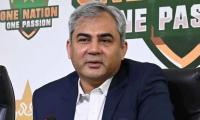ISLAMABAD: Saudi Arabia’s oil receipts account for 85% of exports and 90% of fiscal revenue. Abu Dhabi’s hydrocarbon revenue accounts for 81% of fiscal revenue. Qatar’s earnings from its hydrocarbon sector accounts for 81% of the country’s total government revenues. Saudi Arabia, Abu Dhabi and Qatar have recognized the need to diversify their economies away from heavy dependence on oil and gas due to the volatility of prices and the global shift towards renewable energy sources.
Crown Prince Mohammed bin Salman’s Vision 2030 has placed renewables at its center as Saudi Arabia plans to generate 50% of its electricity from renewables by 2030. Saudi Arabia is planning to spend $270 billion on low-carbon energy projects by 2030. His Highness Sheikh Mohamed bin Zayed has signed a $100 billion strategic partnership with the US to accelerate the energy transition. Qatar targets 20% of its electricity being generated from renewable sources by 2030, and a carbon zero footprint by 2050.
The Abu Dhabi Investment Authority (ADIA) boasts a management portfolio of $853 billion. Saudi Arabia’s Public Investment Fund (PIF) has assets of $776 billion. The Qatar Investment Authority (QIA) has assets under management of $461 billion.
Interestingly, copper plays a crucial role in renewable energy technologies due to its excellent conductivity, durability, and corrosion resistance. Copper is an essential component of solar PV cells. Copper tubes and pipes are used in solar thermal systems. Copper is used in the generators of wind turbines. Copper is used in lithium-ion batteries used for energy storage systems. Copper is used in electric vehicles (EV) charging cables and connectors. Copper heat exchangers are used in geothermal power plants.
Behold the marvel that is Reko Diq in Pakistan, a treasure trove housing some of the world’s most expansive copper reserves. Its vast reservoir boasts an astonishing 5.9 billion tonnes of ore, complemented by an impressive cache of 41.5 million ounces in gold reserves. These substantial resources pave the way for a projected mining venture spanning a minimum of four decades.
The Pakistan Army is ‘going above and beyond the call of duty’ demonstrating exceptional dedication by forging connections with Gulf investors to harness Pakistan’s mineral wealth. The notion of securing investments from Saudi Arabia, Abu Dhabi, and Qatar for Pakistan’s mineral industry resonates with the worldwide movement toward reducing dependence on oil and gas. With substantial untapped mineral reserves, Pakistan holds great potential, and the influx of foreign investments could serve as the key to unlocking these resources.
Beyond its copper reserves, Pakistan boasts confirmed deposits of coal, uranium, iron, salt, lead-zinc, barite, antimony, chromite, magnesite, fluorite, celestite, gypsum, vermiculite, sulfur, mercury, meteorite, phosphate, and silica sand. The cumulative valuation of these resources stands at a staggering $6 trillion.
The Pakistan Army’s proactive efforts in fostering partnerships with Gulf investors exemplify their unwavering commitment to the nation’s economic growth. Their efforts, coupled with the backing of visionary Gulf partners, herald a promising era of economic transformation and resource utilization for Pakistan’s bright future.
This representational image shows a meat shop. — Screengrab via Pixbay/FileJHANG: Taking advantage of the official...
Representational image of an ambulance. — APP/FileTOBA TEK SINGH: A 15-year-old girl died when her scarf got...
A view of the ambulance stuck in traffic on March 13, 2025. — OnlineKABIRWALA: Two women and a child were killed...







